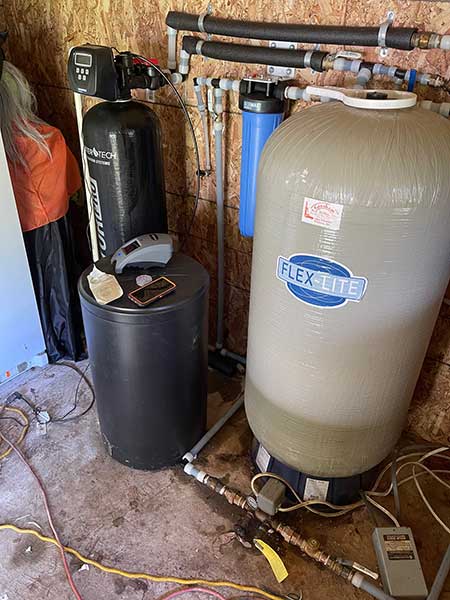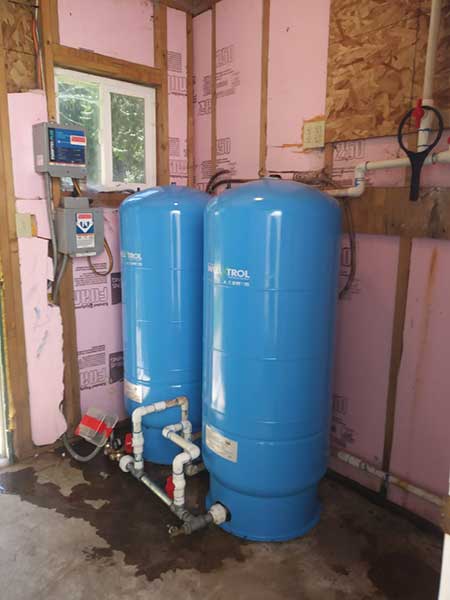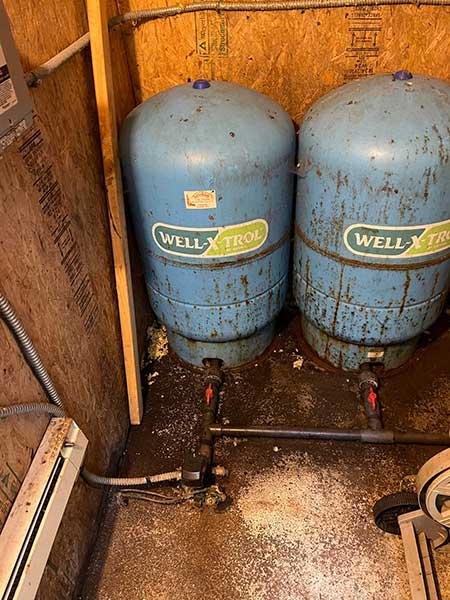Big Blue Pressure Tanks
If you rely on a well system, you have a typically large tank or two in your garage, well house, or other part of your home. These tanks can be grey or black and look like woven fibers on the exterior, or can be large metal blue tanks. There are a few different types, but are all called pressure tanks.
Pressure tanks come in different size, shapes, and colors, but all complete the same basic task of pressurizing your home water system by pressurizing water pumped from a well head or pump. When your pressure tank starts to show signs of rust and corrosion, it is time to give us a call for a replacement.
Pressure tanks are used on a well system to prevent the well’s pump from constantly running when there is a demand on your water system, such as opening a faucet and releasing the pressure. Pressure tanks continue pressurizing your home system so the well pump can shut down for longer periods of time, which extends the life of the pump itself. The life expectancy of a bladder pressure tank is 5 to 7 years before the bladder inside starts to degrade. When your pressure tank begins to fail, you can experience a pulsating flow from your faucet, called water hammering. Another sign your pressure tank has gone bad is the gauge on the tee attached to it will bounce up and down rapidly between the pressure switch’s set parameters. If you notice either of these two occurrences, it is time to replace the pressure tank.
Thankfully replacing a pressure tank is a fairly fast process and your plumbing professional can complete the job in a couple hours. When you call us at Washington Plumbing Professionals, you can always be certain your new pressure tank will be installed using high quality long lasting brass fittings, instead of going with galvanized steel (see our blog about galvanized water piping). Instead of wasting material, we install our tanks with serviceability in mind. When our plumbers are done with your new install, replacing your pressure tank in 5 to 7 years will only require a new tank, saving you money on your next installation.





